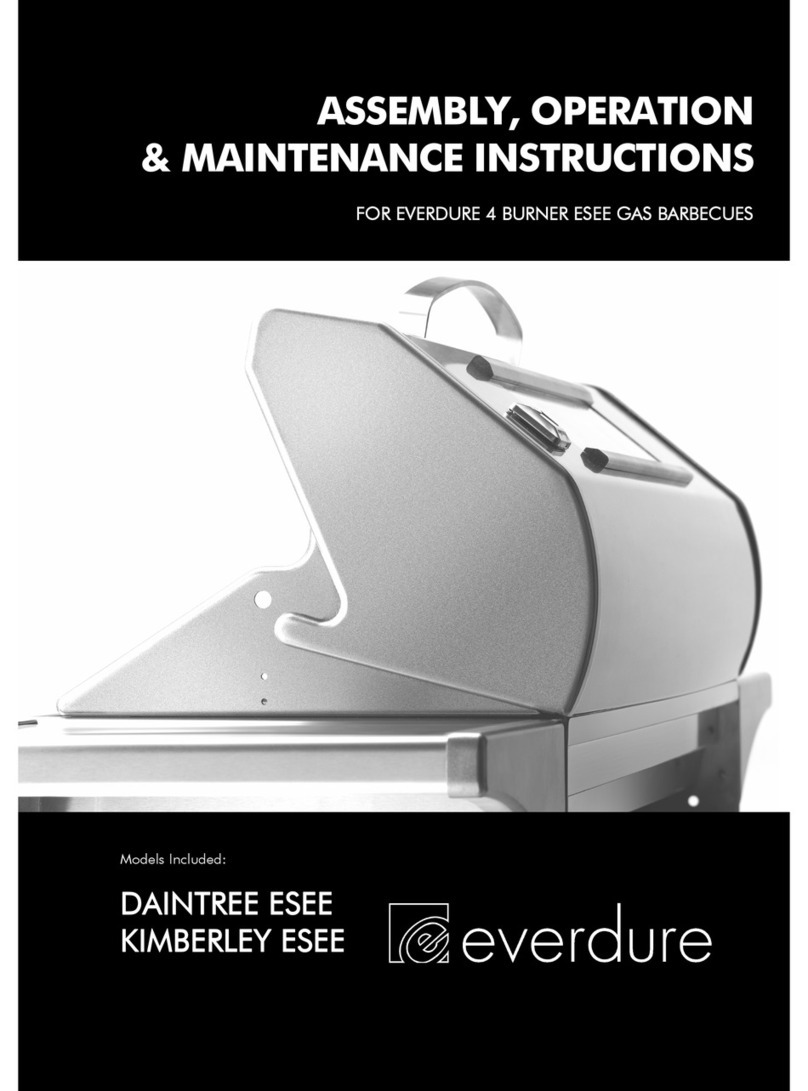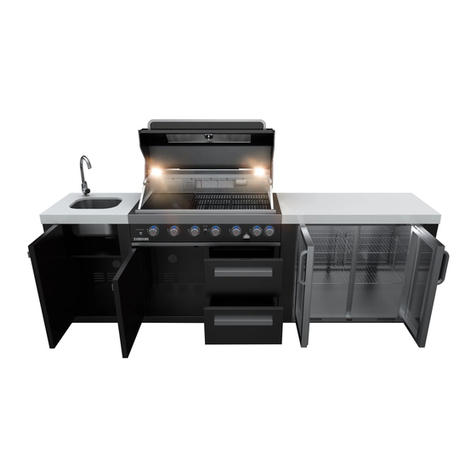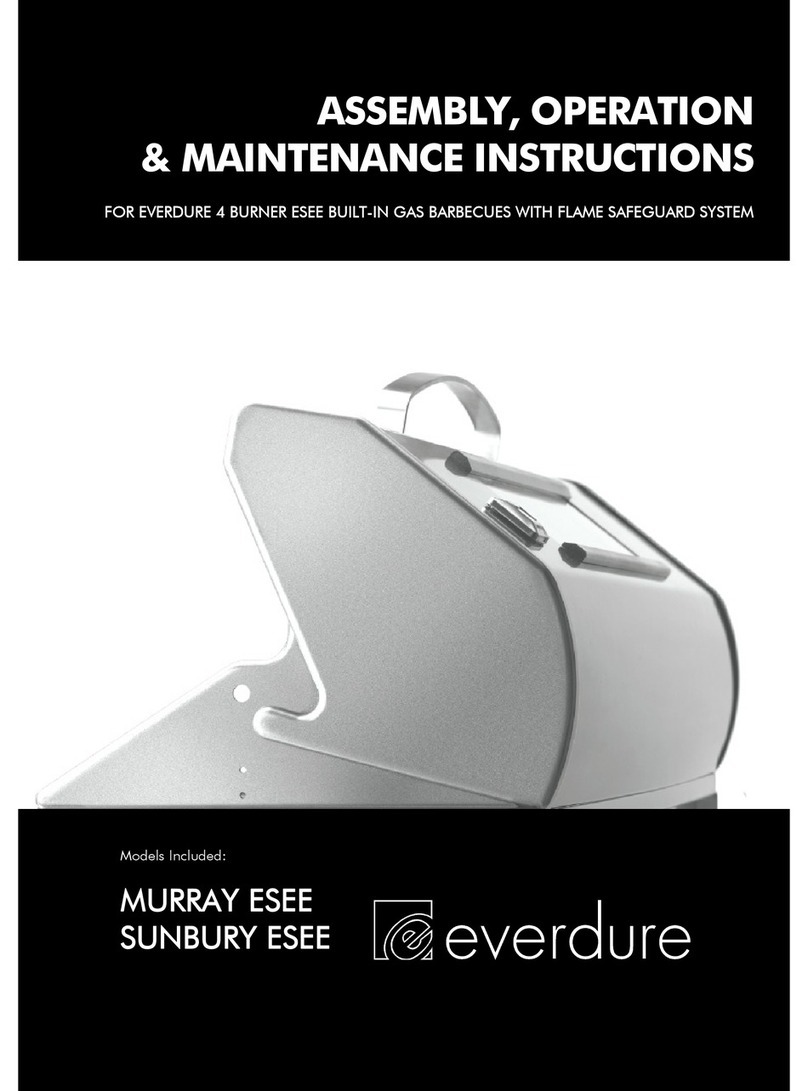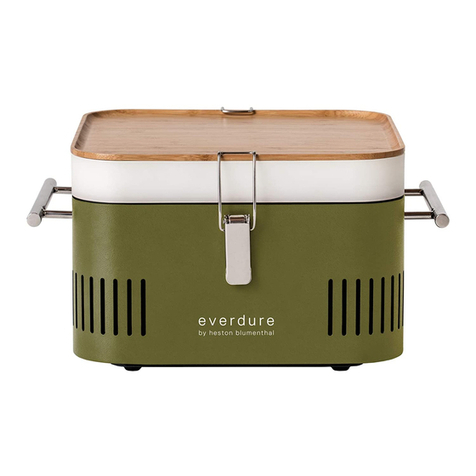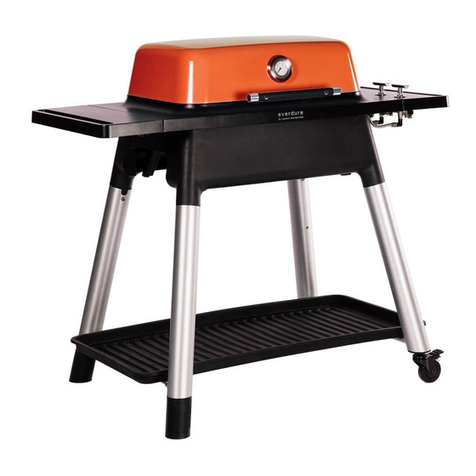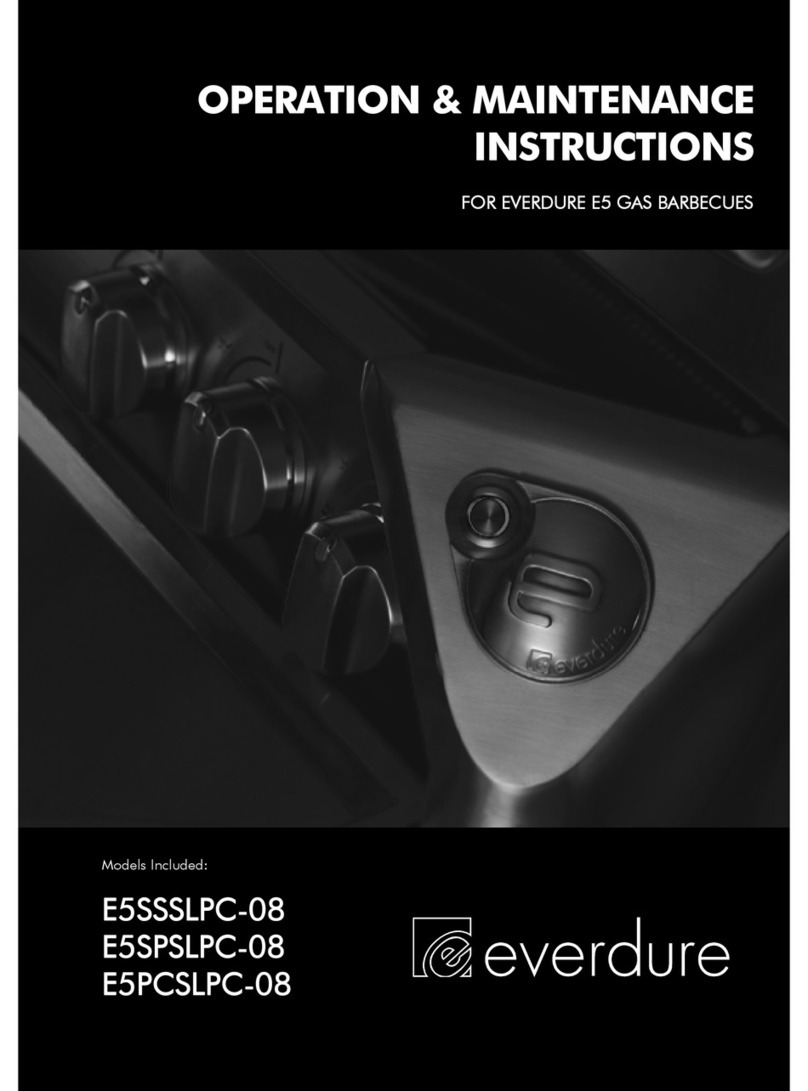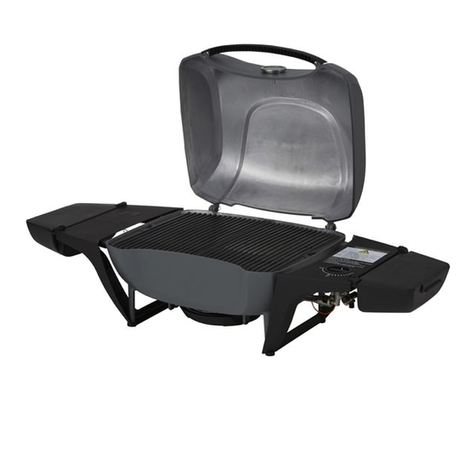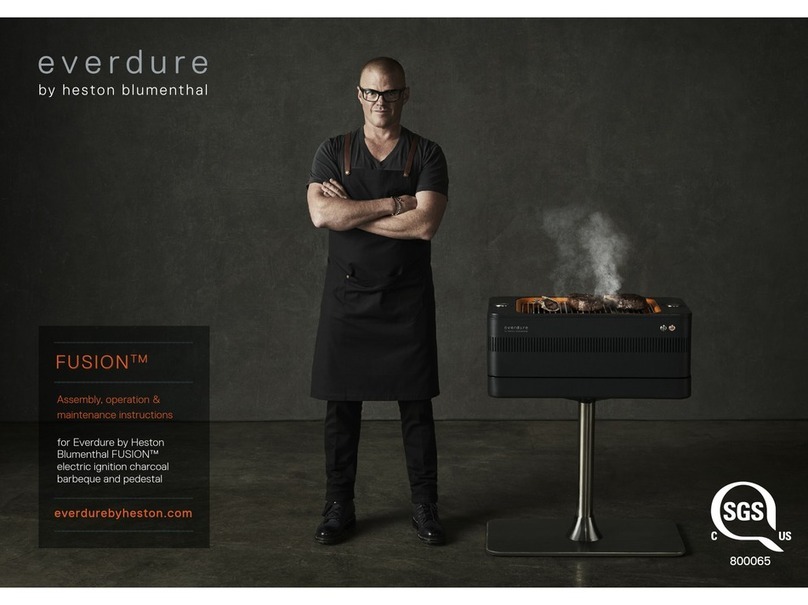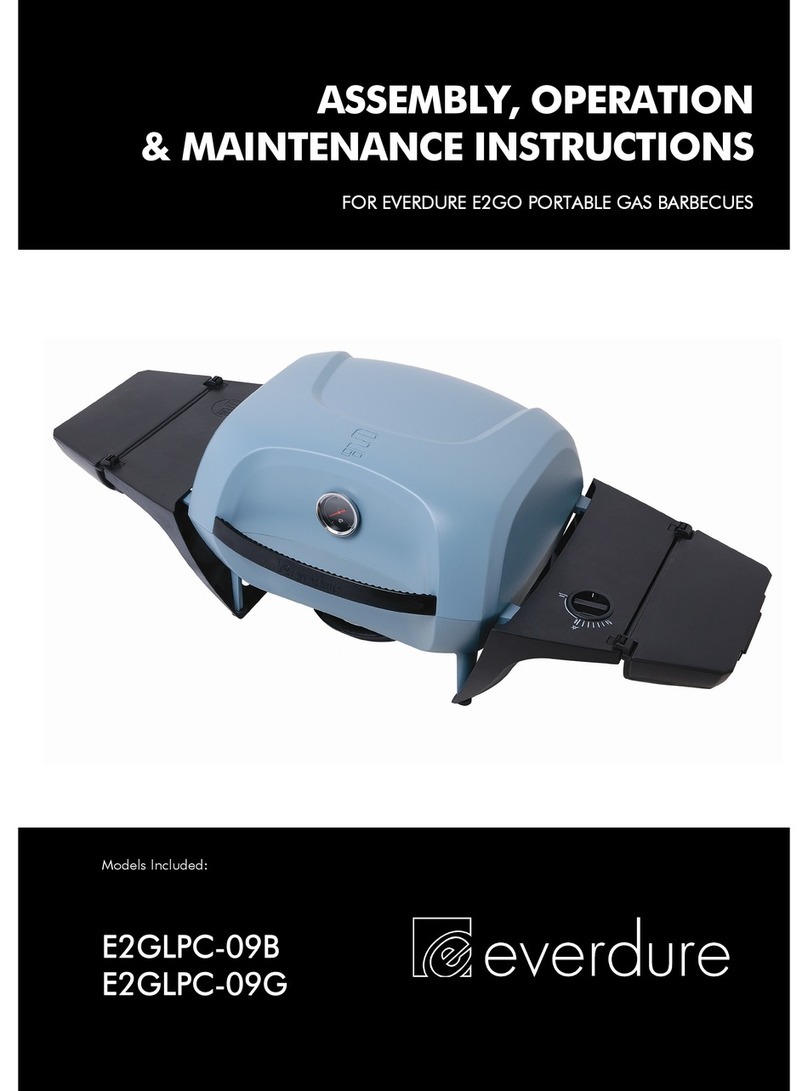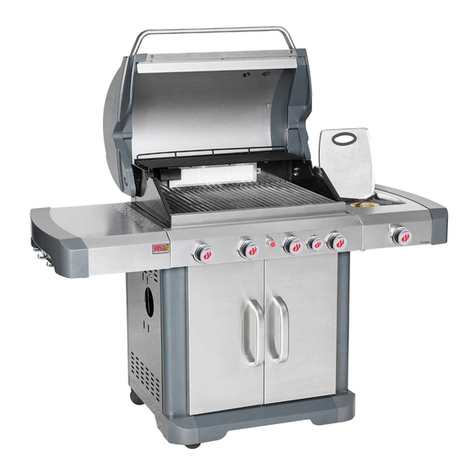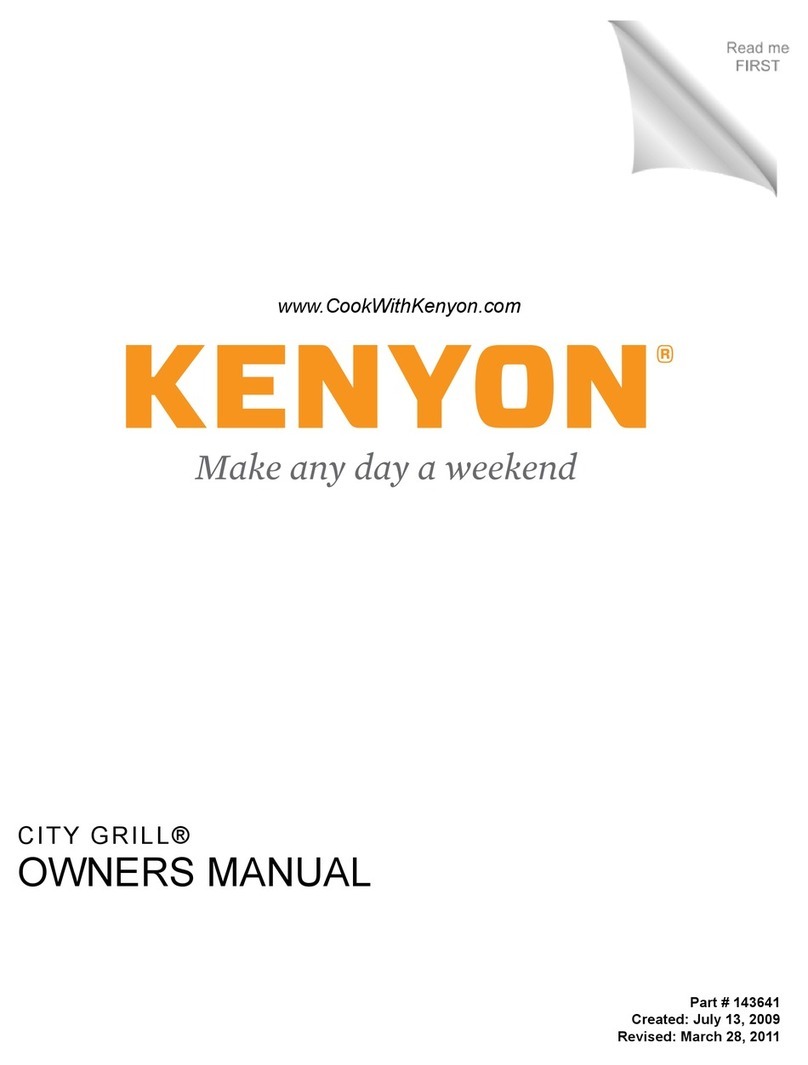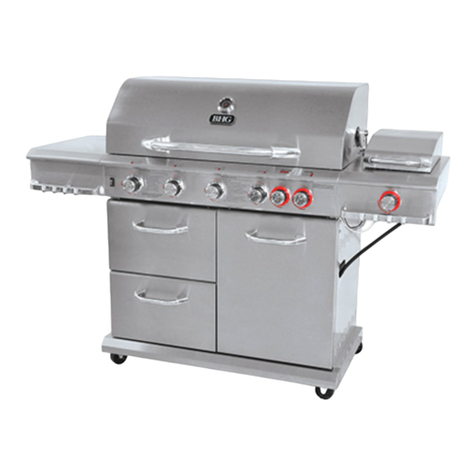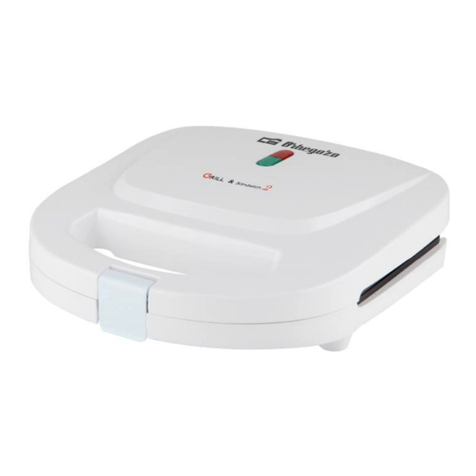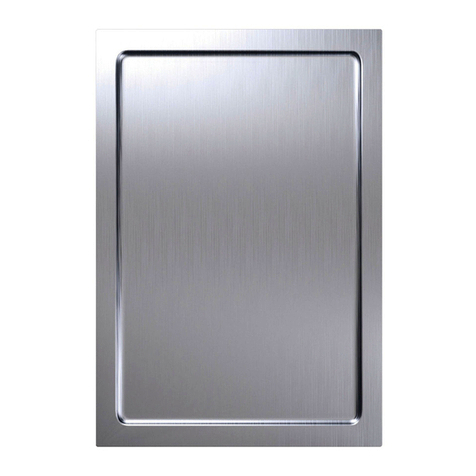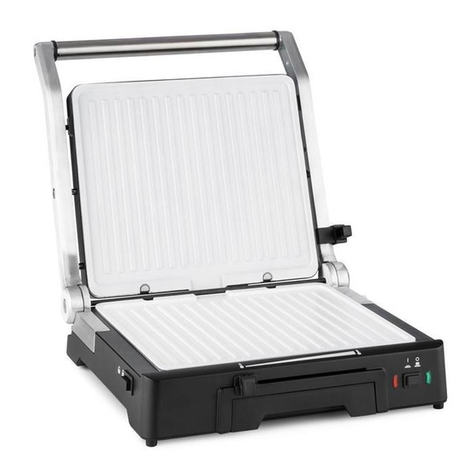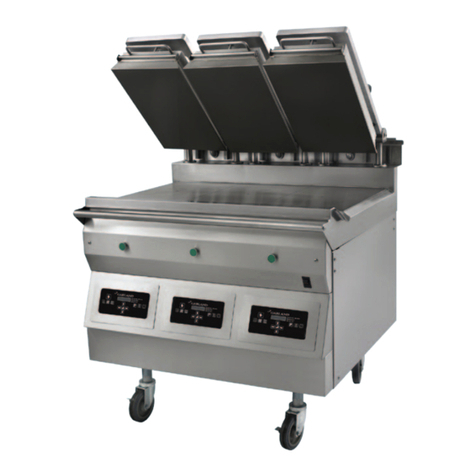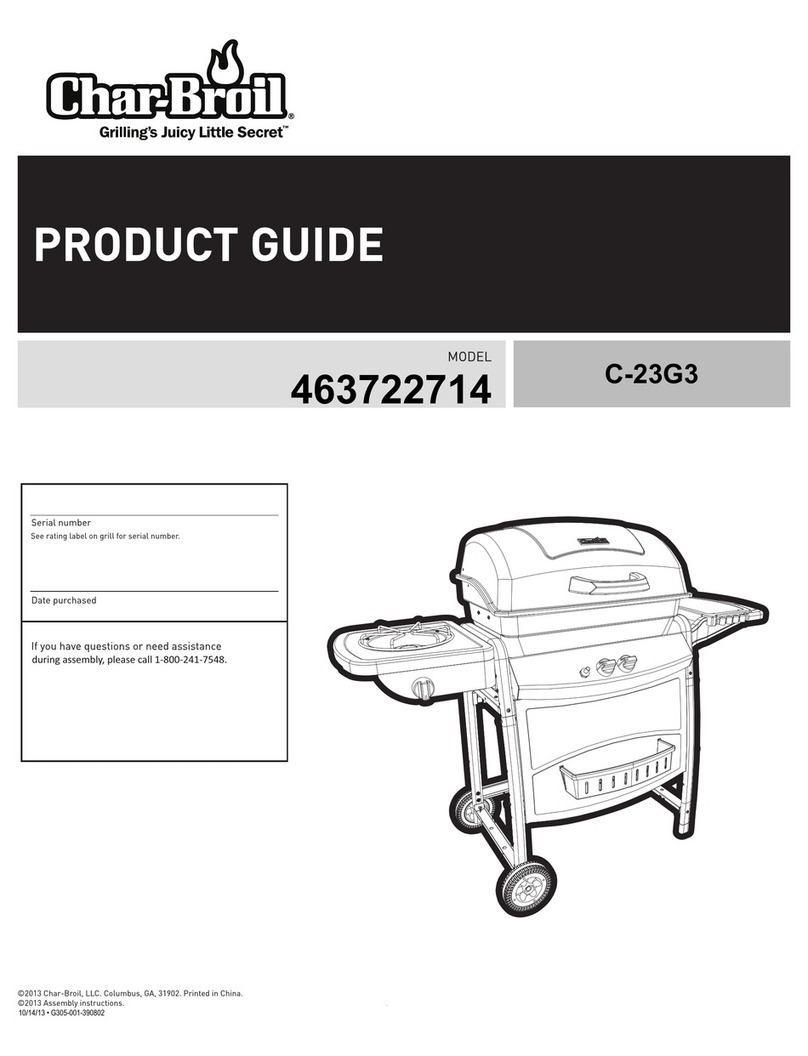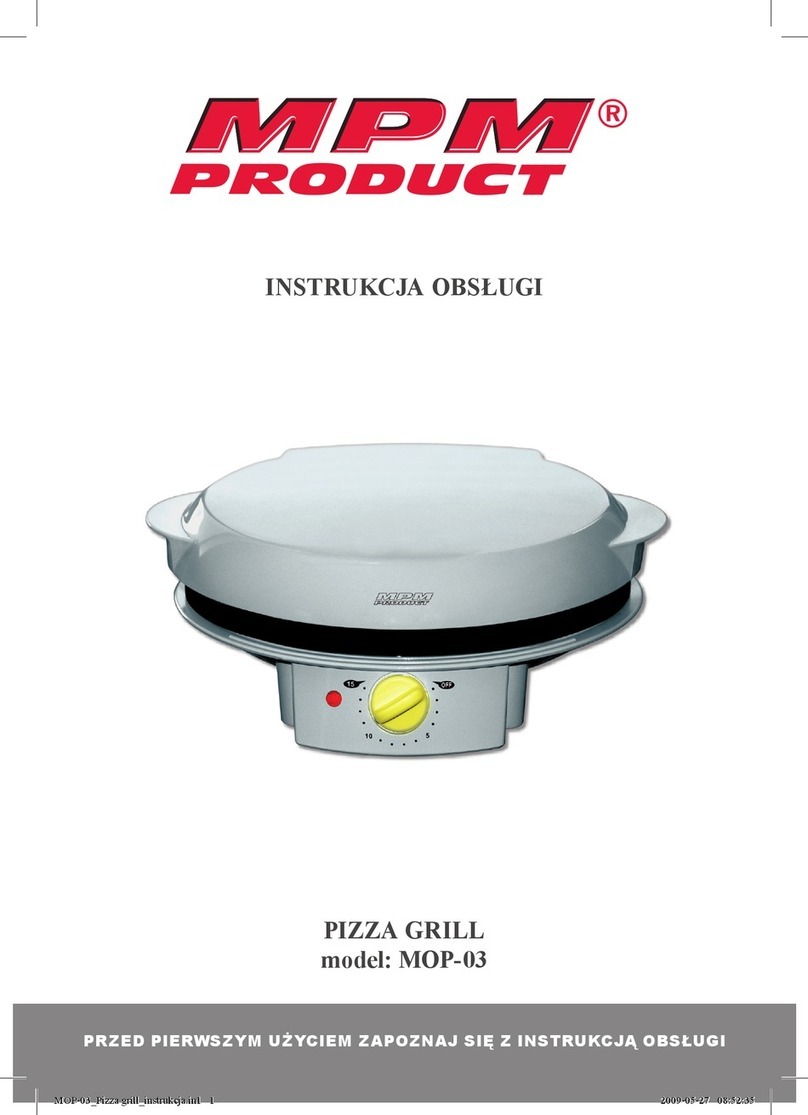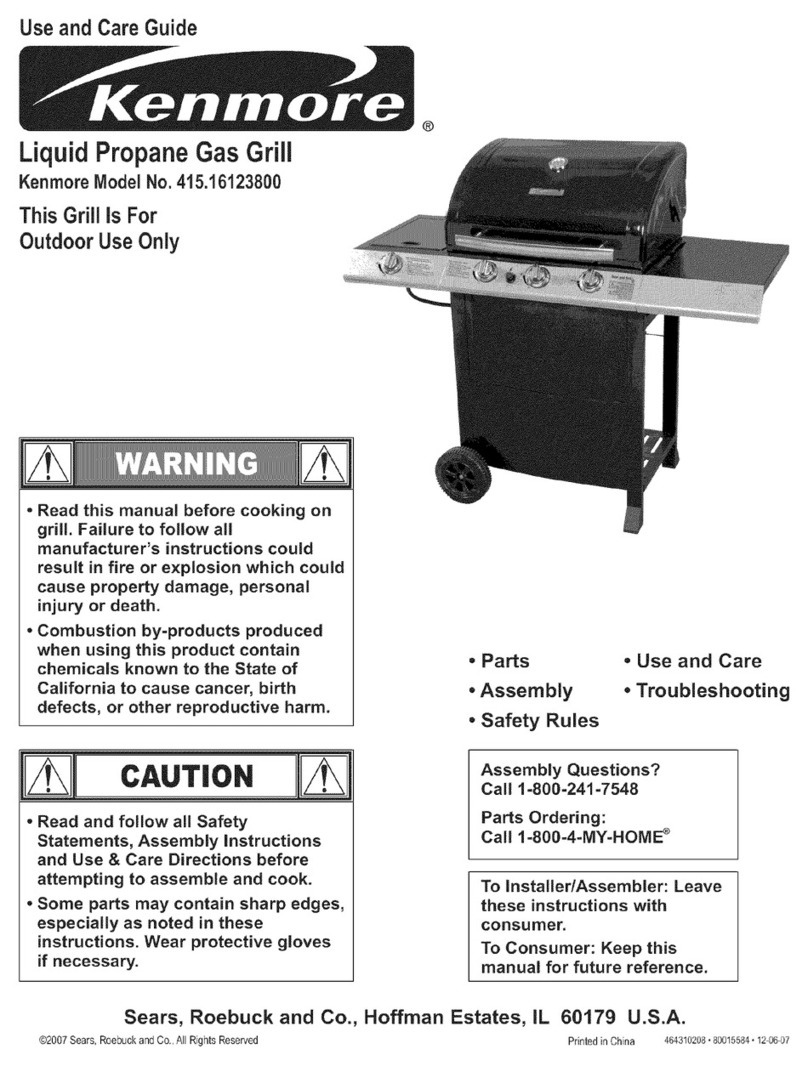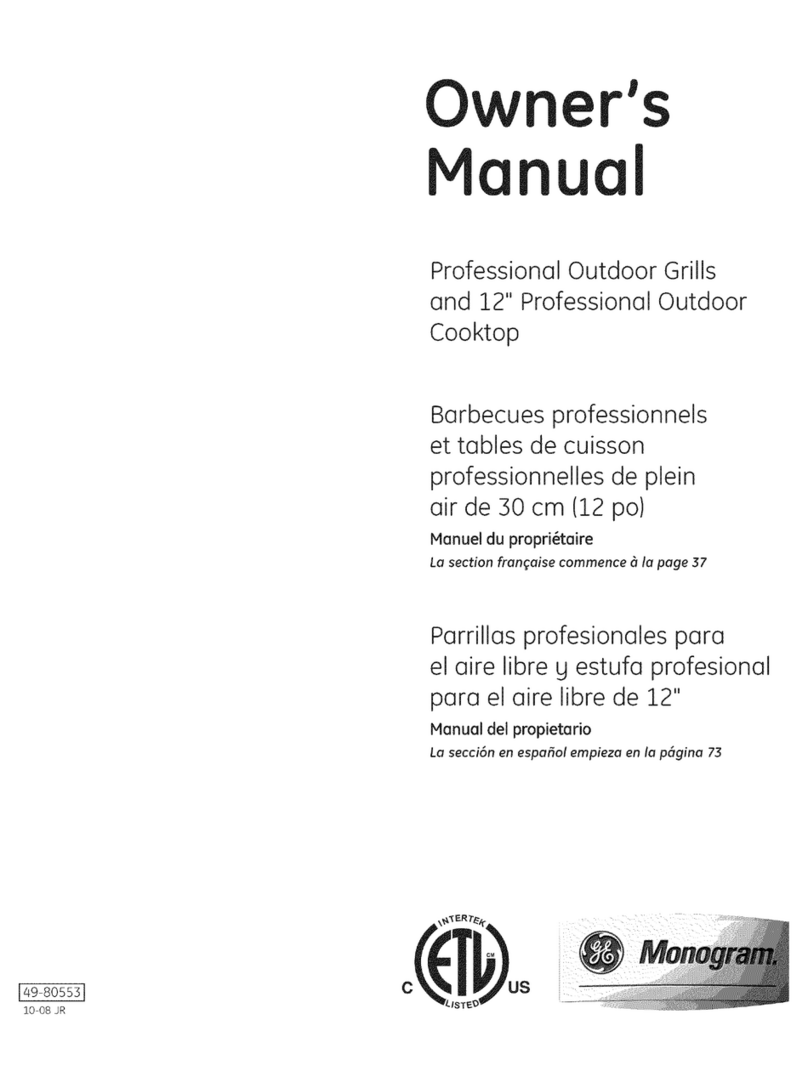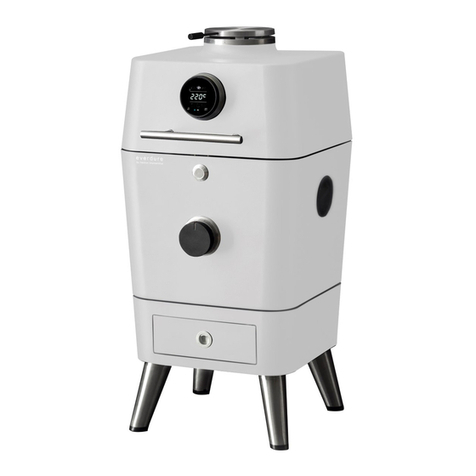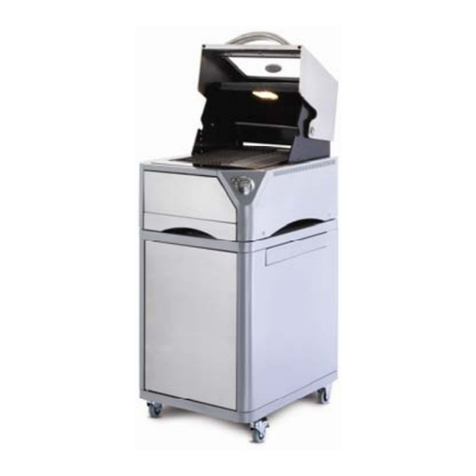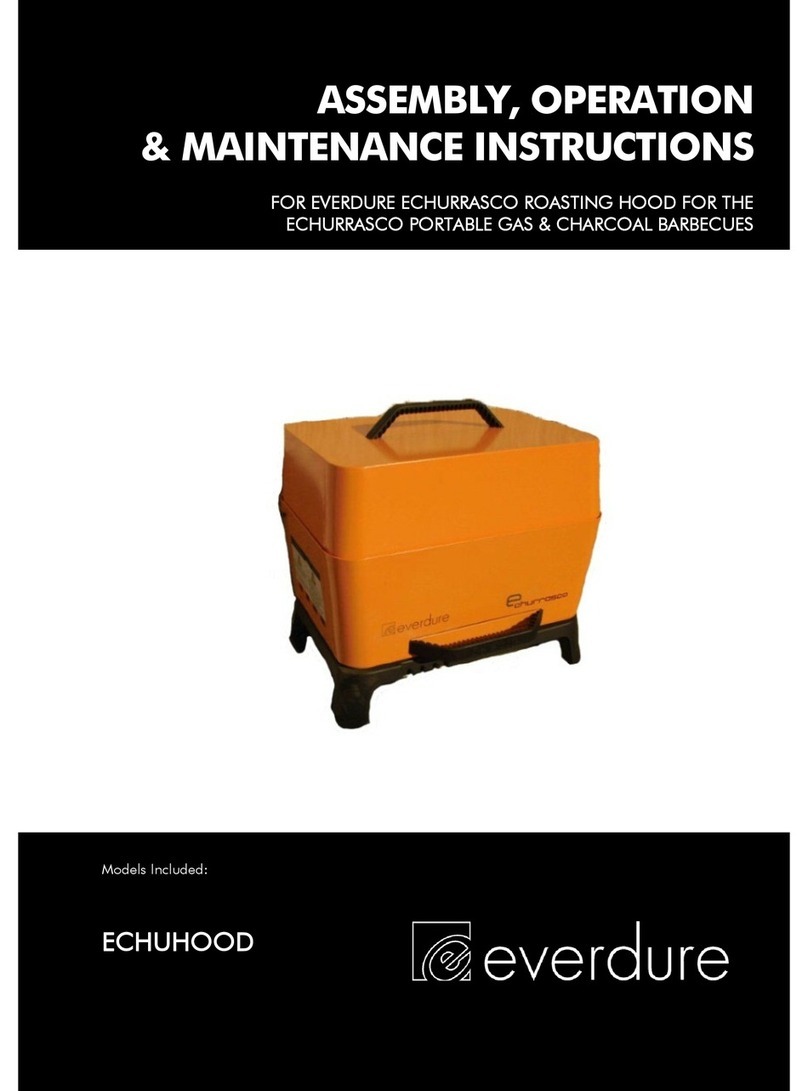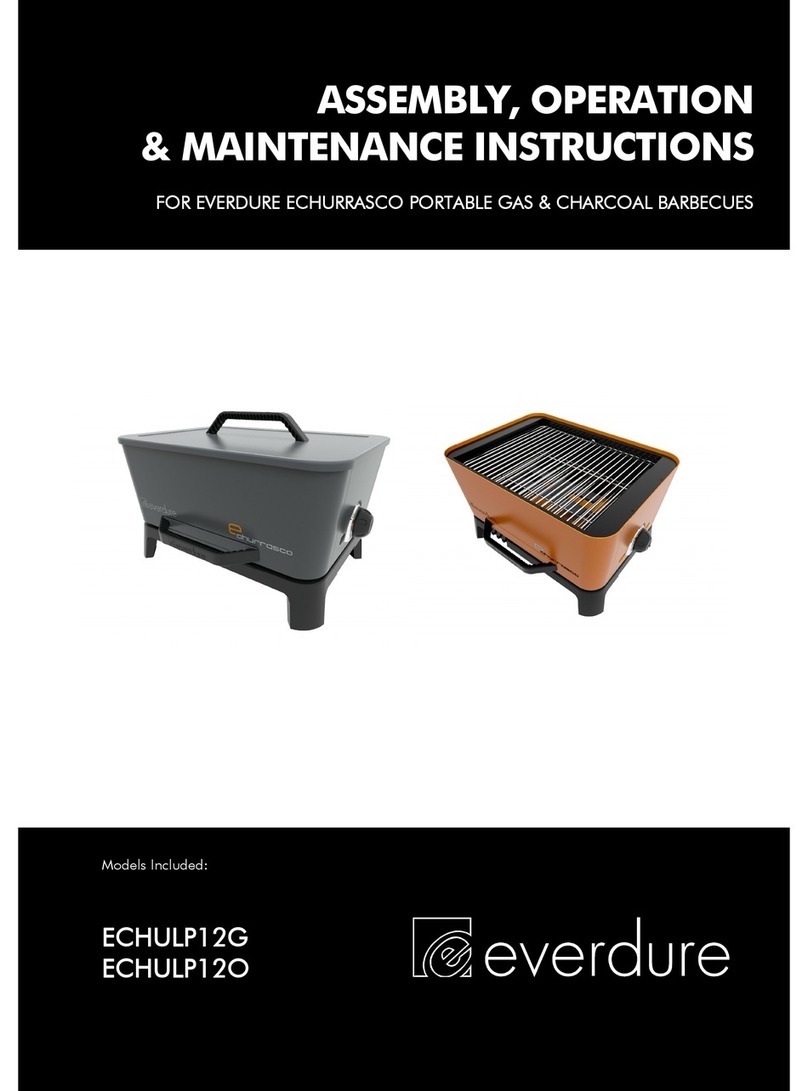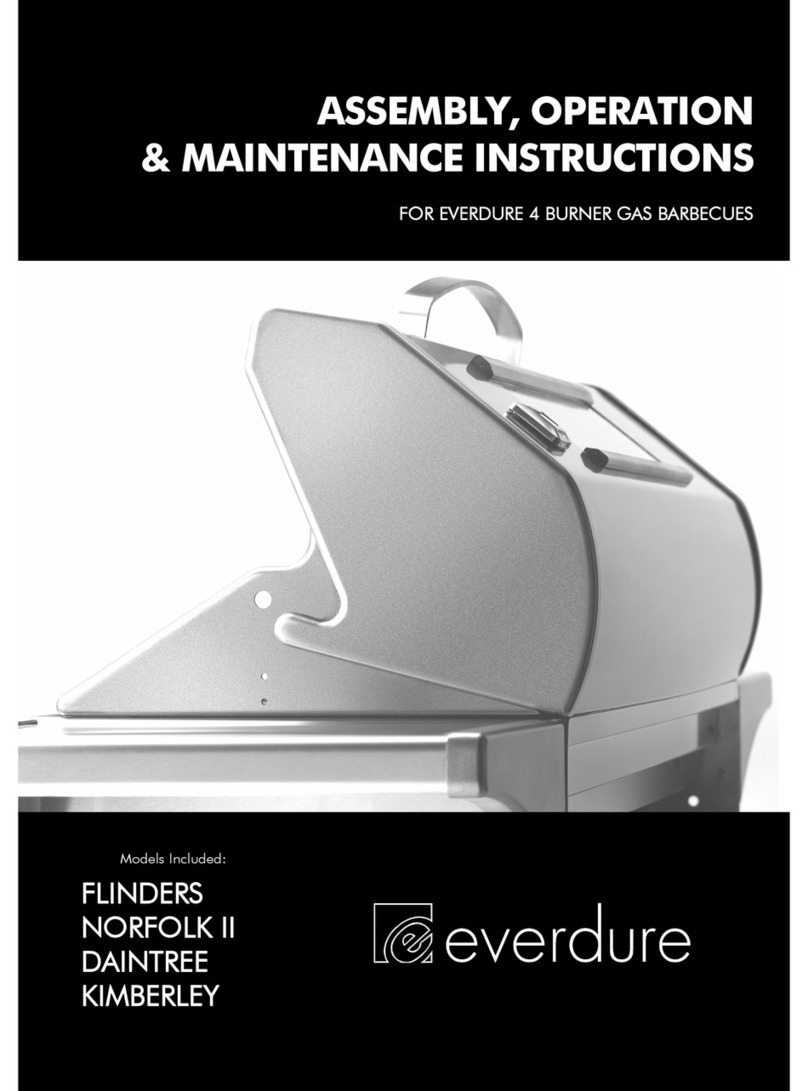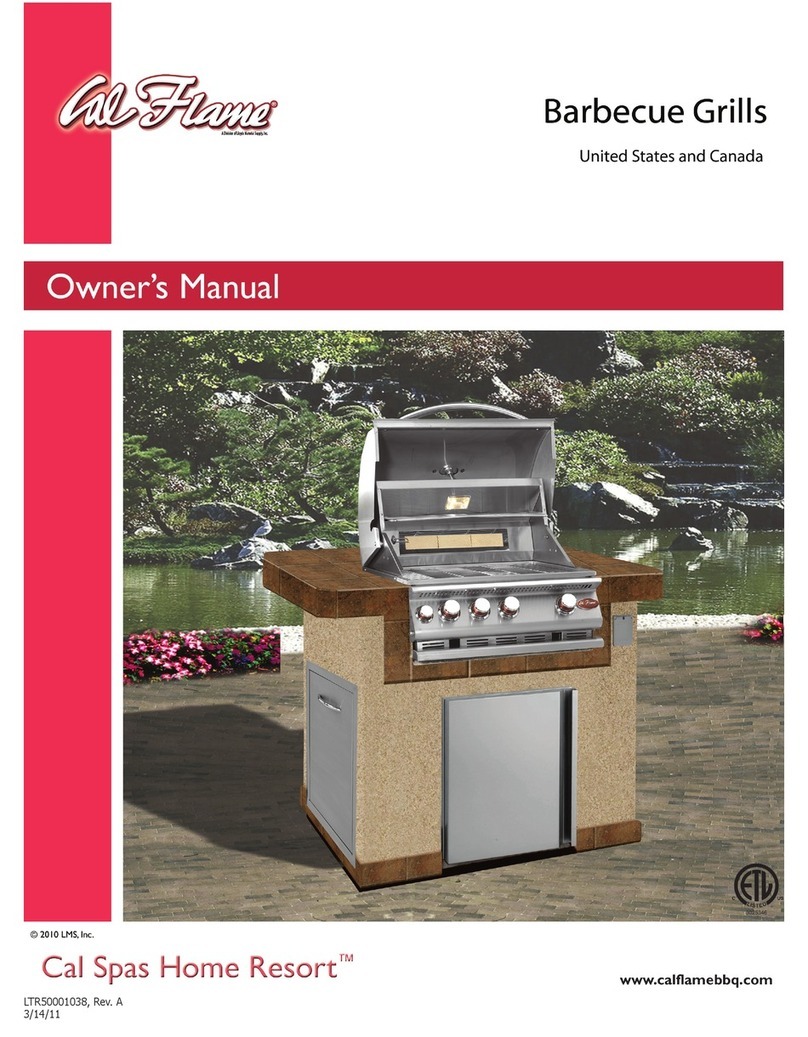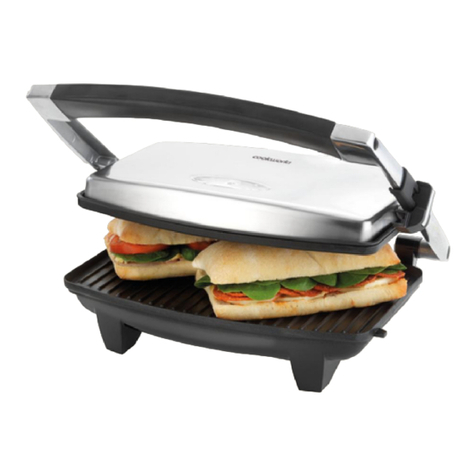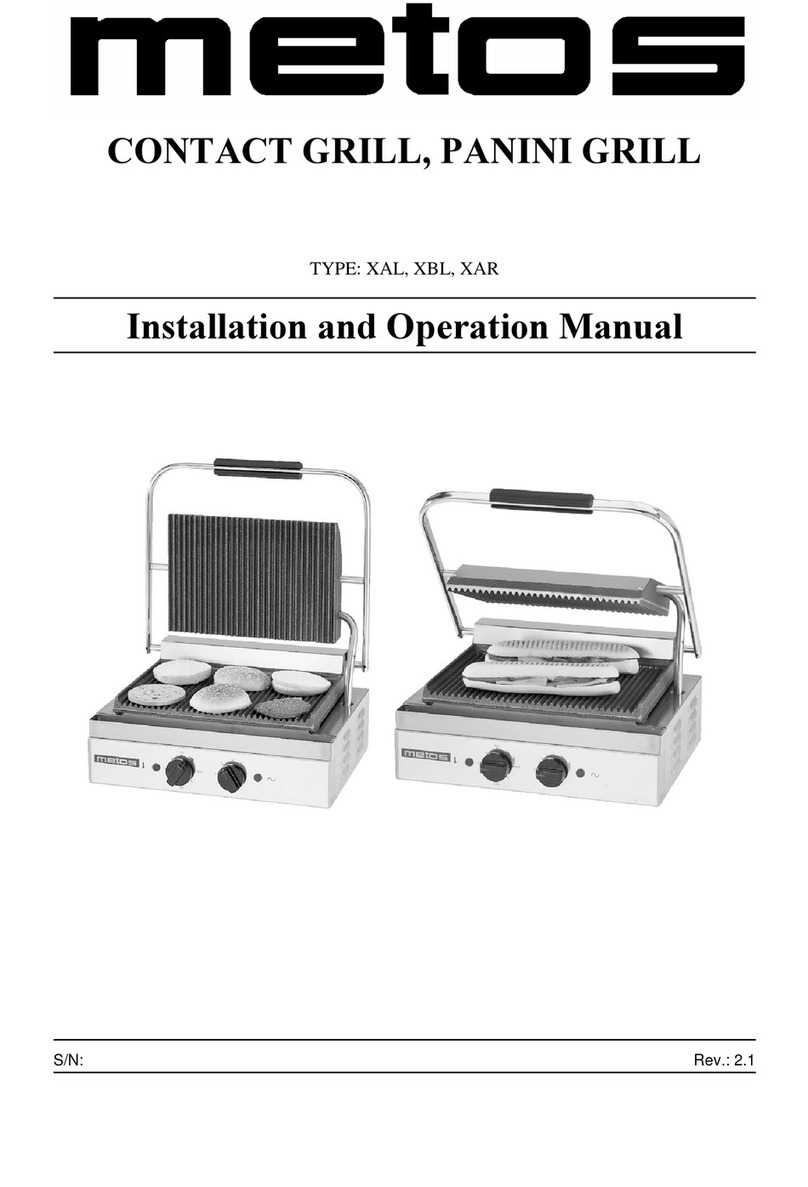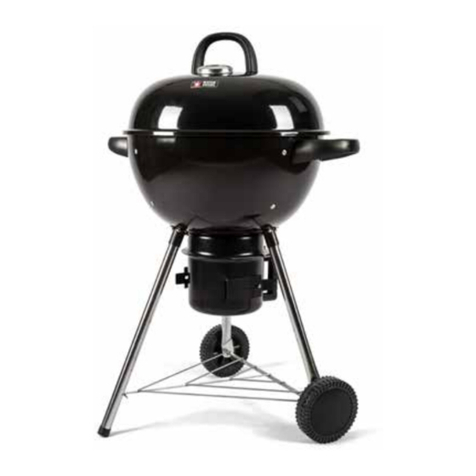
4Assembly, Operation & Maintenance Instructions
IMPORTANT SAFETY INSTRUCTIONS
This instruction manual contains important information necessary for the safe use of this
appliance. Read and follow all warnings and instructions before assembling and operating
this appliance.
WARNING: Accessible parts may be very hot. Keep young children away
1. This gas barbeque and stand set are intended for USE OUTDOORS ONLY. This appliance
must NOT be used indoors.
2. For your safety and enjoyment, read the instructions before using the appliance.
3. This appliance is not intended for commercial use.
4. Ensure that all gas connections are tight before operating this appliance (refer to leak
testing procedure in this manual). Always check for leaks when a gas cylinder is replaced
or reconnected.
5. If not mounted on the cylinder hook, always place gas cylinder on a at level surface.
Beware the cylinder hose may be a trip hazard and may result in injury or the gas cylinder
tipping over.
6. Unsupervised children or pets should not be near a barbeque while cooking or during
warm up or cool down. Ensure children or pets are kept a distance well away from the
barbeque whilst it is in use. Ensure that young children do not play with the appliance.
This appliance is not intended for use by young children or inrm persons.
7. Particular care must be taken when removing the fat tray and the disposable foil trays.
Mishandling of hot oil and fats can cause serious injury. Take care when changing plates &
grills that parts are not hot & oil or fat does not drop onto the burner. Take care that the
burner ports/venturi do not block up.
8. Turn gas valve/control knob and gas cylinder valve o after use. Do not allow build-up of
unburned gas.
9. Never leave the burners on high for more than 10 minutes unless actually cooking. When
cooking with the hood down, always follow the instructions in the Roasting section of this
manual.
10. Do not move the appliance during use. The barbeque should only be lifted by the
serveries at either side. Take care that undue pressure will not be placed on the gas hose,
or turn o the gas supply & remove the hose from the cylinder or gas source (not at the
barbeque). Take care that the fat tray & disposable aluminium foil tray are removed to
minimise fat/oil spillage. It is recommended that protective gloves be worn when handling
any hot components. Parts that are sealed by the manufacturer or agent must not be
altered.
11. This barbeque has been designed to be used either on the supplied trolley or on a
raised bench. When using a raised surface (table etc.), ensure the surface is level, large
enough and strong enough to support the barbeque and will withstand temperatures
of 284°F(140°C )above ambient temperature. When using the stand, ensure that your
barbeque is in a level position and the barbeque is secured onto the stand correctly (four
screws at the barbeque base).
12.People with ammable clothing such as nylon etc. should keep well away from the
barbeque when it is operating. This appliance must be kept away from ammable materials
during use.
13. Do not use this appliance for any purpose other than what it is intended for. Any
modication of the appliance may be dangerous. Do not modify the appliance.
14.In case of fat re turn cylinder o. The fat tray should be cleaned and checked before
using the barbeque. Disposable aluminium foil trays should be replaced before using the
barbeque. Regular cleaning should reduce the build-up of fat and food residues which is
combustible and can result in a fat re. Fat res can be prevented with diligence in
cleaning your fat tray and regular replacement of aluminium foil trays. Do not
allow the aluminium foil tray to overow. Damage as a result of fat re is not covered by
your warranty and voids it. Do not use sand, kitty litter or fat absorbents in the fat tray or
disposable aluminium foil tray.
15. Ensure that the product has adequate clearance from combustible materials. The
appliance is designed so that heat will not aect the stand. All combustible materials must
be kept more than 36 inches from the sides and rear of the barbeque. The appliance shall
not be located used under overhead unprotected combustible construction.
16. If a burner makes a hissing sound when lit, it may be burning inside. Turn the burner o,
allow to cool, and try ignition again. Keep your barbeque protected against strong wind
– if this cannot be avoided, always check that the burners remain alight if operating the
barbeque in windy conditions.
17. Do not carry out any servicing on the gas manifold of the barbeque yourself – this must
only be done by authorised technicians.
18. We recommend that you regularly maintain your barbeque and keep it in good condition. This
can be achieved by following the cleaning and maintenance suggestions in this booklet.
19. When not using the stand, the cylinder should be placed at a lower level to the barbeque,
* Grill installation must conform with local codes or, in the absence of local codes, with the National Fuel Gas Code, ANSI Z223.1/NFPA 54, Storage and Handling of Liqueed Petroleum Gases,
ANSI/NFPA 58; or Natural Gas and Propane Installation Code, CSA B149.1; Propane Storage and Handling, CSA B149.2.
